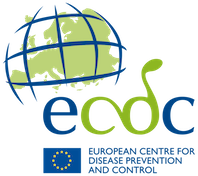Questions and answers on vaccine ingredients
Some parents are concerned about specific ingredients contained in vaccines. However, the amount of these ingredients in vaccines is minuscule and necessary.
This section contains commonly asked questions with suggested answers that can be used to assist with conversations on vaccine ingredients with patients, parents or caregivers, or made into information sheets to be shared with them ahead of their visit.
Why do some vaccines contain mercury?
The preservative thiomersal, which some people refer to when talking about ‘mercury in vaccines’, contains ethylmercury, which does not accumulate in the body because it is broken down and eliminated quickly. Ethylmercury is different from methylmercury, the type of mercury that can accumulate in certain fish and seafood and can pose health risks.
Thiomersal is contained in some multi-dose preparations of influenza vaccine and in some locally produced vaccines as a preservative. Preservatives prevent contamination with bacteria. Early in the 20th century, most vaccines were packaged in vials that contained multiple doses. Doctors and nurses would draw up a single dose and place the vaccine back in the refrigerator. Unfortunately, bacteria would sometimes inadvertently enter the vial and cause abscesses at the site of the injection or bloodstream infections that were occasionally fatal. Preservatives, originally added in the 1930s, solved this problem.
The most common preservative used was thiomersal, a mercury-containing compound. As more vaccines were given, children received greater quantities of thiomersal. By the late 1990s, the American Academy of Paediatrics and the Public Health Service requested that thiomersal be removed from vaccines to make ‘safe vaccines safer’. No evidence existed to suggest that thiomersal was causing harm, but they wanted to be cautious. Unfortunately, their caution worried parents, who wondered whether mercury in vaccines was causing subtle signs of mercury poisoning or autism.
Addressing these concerns, scientists performed several studies, all of which showed that thiomersal at the level contained in vaccines hadn’t caused harm.
As mercury is a naturally occurring element found in the earth’s crust, air, soil and water, we are all exposed to it. Infants who are exclusively breast-fed ingest more than twice the quantity of mercury than is contained in vaccines.
Why do some vaccines contain antibiotics?
Many vaccines contain trace quantities of antibiotics or stabilisers. Antibiotics are used during the manufacture of vaccines to prevent inadvertent contamination with bacteria or fungi. Trace quantities of antibiotics are present in some vaccines.
However, the antibiotics contained in vaccines (neomycin, streptomycin or polymyxin B) are not those commonly given to children. Therefore, children with allergies to antibiotics such as penicillin, amoxicillin, sulfonamides, or cephalosporins can still be vaccinated.
Why do some vaccines contain aluminium?
Aluminium is used in vaccines to enhance the immune response by allowing for lesser quantities of active ingredients and, in some cases, fewer doses. Some people wonder whether aluminium in vaccines is harmful. The facts are reassuring.
Firstly, aluminium is present in our environment; the air we breathe, the water we drink and the food we eat all contain aluminium. Secondly, the quantity of aluminium in vaccines is small. For example, in the first six months of life, babies receive about four milligrams of aluminium if they get all of the recommended vaccines. However, during this same period they will ingest about 10 milligrams of aluminium if they are breast-fed, 40 milligrams if they are fed regular infant formula, and up to 120 milligrams if they are fed soy-based infant formula.
A large study carried out in Denmark, published in 2025, followed more than one million children for more than 20 years and found no links between early-childhood exposure to aluminium-containing vaccines and conditions such as neurodevelopmental disorders, atopic or allergy disorders, or autoimmune diseases.
Why do some vaccines contain formaldehyde?
Formaldehyde is used during the manufacture of some vaccines to inactivate viruses (like polio and hepatitis A viruses) or bacterial toxins (like diphtheria and tetanus toxins). While the formaldehyde is diluted during the manufacturing process, small quantities remain. Because formaldehyde is associated with the preservation of dead bodies, its presence in vaccines seems inappropriate.
However, it is important to realise that formaldehyde is also a by-product of protein and DNA synthesis, so it is commonly found in the bloodstream. The quantity of formaldehyde found in blood is 10 times greater than that found in any vaccine.
Are some vaccines made using foetal cells?
Foetal cells are used to make four vaccines: rubella, chickenpox, hepatitis A, and rabies. Foetal cells used to grow the vaccine viruses were isolated from two elective abortions performed in Sweden and England in the early 1960s.
Some parents wonder why scientists would choose to use foetal cells at all. There are several reasons for this. First, viruses, unlike bacteria, require cells to grow. Second, human cells are often better than animal cells at supporting the growth of human viruses.
Third, foetal cells are different from other types of cells in that they can reproduce many, many times before dying. Other cells reproduce only a limited number of times before they die.
Can the ingredients in vaccines cause allergic reactions?
Ingredients used in vaccines or when they are administered, such as gelatine, egg proteins and antibiotics, might cause an allergic reaction. Nevertheless, these reactions are rare and, in most circumstances, do not pose a threat to life if appropriately medically handled. Some vaccines, including influenza and yellow fever vaccines, are grown in eggs and the final products contain sufficient quantities of egg proteins to cause an allergic reaction, albeit rarely, in people allergic to eggs.
Antibiotics are used to prevent bacterial contamination during production of some vaccines, such as neomycin, streptomycin, polymyxin B, chlortetracycline and amphotericin B. People who are allergic to any of the antibiotics used during production should consult with the doctor or nurse responsible before any vaccine is administered.
Read more
This content is based on the ECDC guide ‘Let’s talk about protection: enhancing childhood vaccination uptake’, published in 2016 and the related references in the guide. The information has been updated where appropriate as of 25 November 2025.




